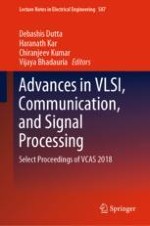2020 | Buch
Advances in VLSI, Communication, and Signal Processing
Select Proceedings of VCAS 2018
herausgegeben von: Dr. Debashis Dutta, Prof. Haranath Kar, Prof. Chiranjeev Kumar, Prof. Vijaya Bhadauria
Verlag: Springer Singapore
Buchreihe : Lecture Notes in Electrical Engineering
